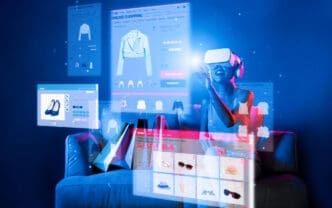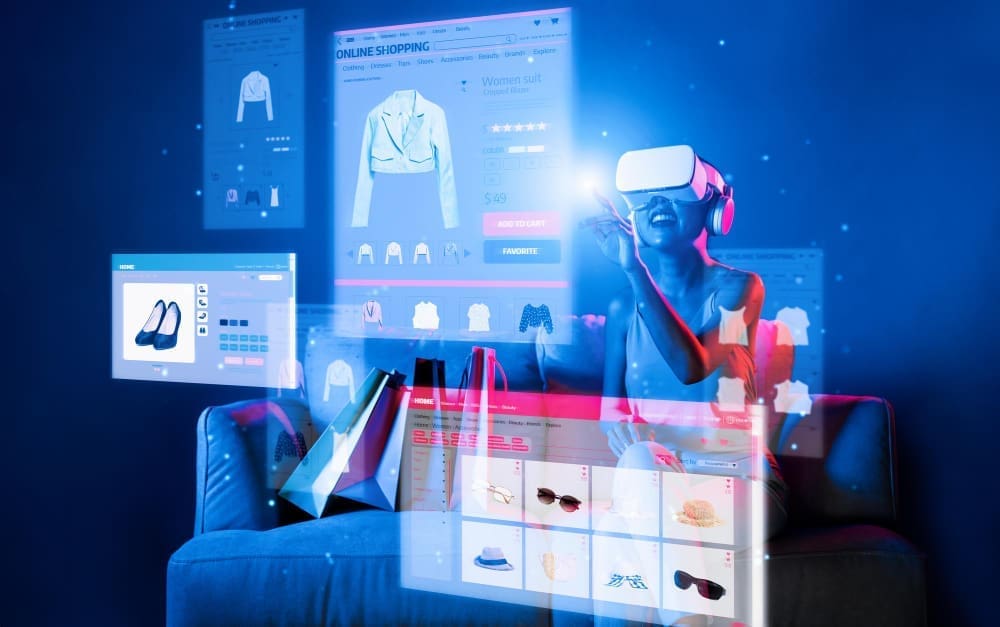Leading global retailers and innovative tech startups are deploying a powerful combination of artificial intelligence, augmented reality (AR), and generative AI to solve one of e-commerce’s most persistent and costly problems: the inability for customers to try before they buy. This technology, known as virtual try-on (VTO) and AI-powered personalized styling, is rapidly moving from a niche gimmick to a core business strategy, primarily online through websites and mobile apps, but also in physical stores via smart mirrors. Its mission is to slash cripplingly high return rates, boost buyer confidence and conversion, and deliver the kind of hyper-personalized shopping experience that was once the exclusive domain of luxury clientele, fundamentally reshaping how consumers interact with products from fashion and cosmetics to eyewear and furniture.
The Billion-Dollar Problem of “Buyer’s Remorse”
The explosion of e-commerce has brought unparalleled convenience, but it created a major disconnect. Without the ability to physically touch a garment, see how a shade of lipstick complements their skin tone, or gauge if a sofa will overwhelm their living room, customers are forced to make a leap of faith. This uncertainty is the primary driver of product returns, a logistical and financial nightmare for retailers.
Every returned item initiates a costly reverse logistics chain. It involves shipping costs, processing fees at a warehouse, inspection, and, if the item is still in perfect condition, repackaging and restocking. This process erodes profit margins and contributes significantly to carbon emissions, creating a substantial environmental footprint.
For the customer, the experience is equally frustrating. The initial excitement of a purchase is replaced by the disappointment of a poor fit or mismatched color, followed by the chore of printing labels, repackaging the item, and making a trip to the post office. AI-driven virtual try-on directly targets this friction point, aiming to provide certainty and confidence long before the “Add to Cart” button is ever clicked.
How Virtual Try-On Technology Works
At its core, VTO is a sophisticated interplay of several advanced AI disciplines. It is not a single technology but an ecosystem of algorithms working in concert to create a seamless and realistic user experience. The goal is to accurately map a 2D or 3D digital product onto a user’s unique body, face, or environment in real-time.
The Foundation: Computer Vision and AR
The process begins with a device’s camera, typically on a smartphone or a store’s smart mirror. Computer vision algorithms instantly go to work, analyzing the live video feed to identify and map key points. For apparel, this means detecting the location of the shoulders, waist, hips, and limbs to create a skeletal model. For makeup or eyewear, it involves precisely mapping facial landmarks like the lips, eyes, nose bridge, and cheekbones.
Once this real-world canvas is understood, augmented reality takes over. AR technology overlays the digital product—the dress, the lipstick, the sunglasses—onto the camera’s view. Early iterations of this technology were often crude, appearing like a simple digital sticker placed on the screen. However, modern systems are far more advanced, capable of tracking movement and adjusting the overlay in real-time as the user turns their head or moves their body.
The Game-Changer: Generative AI and 3D Realism
The true magic, and the most recent breakthrough, lies in the application of generative AI. Simply overlaying a flat image of a dress is unconvincing. Customers need to see how the fabric drapes, how it stretches across the chest, and how it folds at the elbow. This is where generative models, such as Generative Adversarial Networks (GANs) or diffusion models, come into play.
These AI systems are trained on massive datasets of clothing on different body types, learning the complex physics of various fabrics. They can take a standard 2D product photo and generate a realistic, dynamic 3D model. This model can then be “dressed” onto the user’s computer vision-generated body map, realistically simulating shadow, light, and fabric behavior. The result is a far more believable representation of how the garment will actually look and fit.
Beyond Visualization: The AI Personal Stylist
Virtual try-on solves the visualization problem, but a parallel AI revolution is happening in the realm of recommendation. AI-powered personal stylists go beyond showing you how an item looks; they help you discover what items you will love in the first place, creating a deeply personalized shopping journey.
Understanding the Shopper’s DNA
These AI stylists act like data detectives, building a unique “style profile” for each user. They analyze a vast array of signals, including past purchases, browsing history, items added to wish lists, and even how long a user hovers over a particular product. More advanced systems can use Natural Language Processing (NLP) to parse customer reviews, understanding that a user frequently comments on “soft fabrics” or “a structured fit.”
By synthesizing these data points, the AI develops a nuanced understanding of a user’s preferences for color, silhouette, pattern, and brand. This goes far beyond simple rules-based systems, enabling the AI to predict styles a customer might like, even if they’ve never seen that specific brand or item before.
The Intelligent Recommendation Engine
With this style profile, the AI recommendation engine can deliver hyper-relevant suggestions. Instead of a generic “You May Also Like” section, it can offer tailored advice. For example, it might suggest a new blouse that perfectly matches the color palette of a skirt the user bought two months ago. It can even assemble entire outfits, showing how a set of items can be combined for a complete look, often leading to a higher average order value.
The Tangible Business Impact
For businesses, the adoption of VTO and AI styling is not just about technological flair; it is about driving measurable results and securing a competitive edge in a crowded market.
Slashing Crippling Return Rates
The most immediate and significant return on investment comes from reducing returns. When customers can accurately visualize fit and style, the likelihood of a return due to “it didn’t look like I expected” plummets. Major brands and VTO platform providers consistently report return rate reductions ranging from 20% to over 40%, a massive saving in reverse logistics costs.
Boosting Conversions and Engagement
Virtual try-on is an inherently engaging and “sticky” feature. It increases the time users spend on a product page and within a mobile app. This increased engagement, coupled with the confidence VTO provides, directly translates into higher conversion rates. Retailers often see a 2x to 5x increase in conversions for products enabled with a VTO feature compared to those without.
A Goldmine of Actionable Data
Perhaps one of the most underrated benefits is the new stream of data this technology unlocks. Retailers can now see which items are being “tried on” most, even if they aren’t purchased. They can analyze which combinations are popular, identify common fit issues across certain demographics, and understand unmet demand. This data is invaluable for informing inventory planning, future product design, and targeted marketing campaigns.
Challenges on the Horizon
Despite its rapid progress, the technology is not without its hurdles. Achieving perfect realism remains a challenge. Poor lighting, low-quality cameras, or complex patterns can sometimes result in a glitchy or unconvincing experience that can break a customer’s trust.
Furthermore, the collection of facial and body data raises critical privacy concerns. Companies must be transparent about how data is used and stored, prioritizing user consent and robust security to build and maintain trust. There is also an ethical imperative to ensure these AI models are trained on diverse datasets to be inclusive and perform accurately for all body types, skin tones, and sizes, actively working to eliminate bias.
In conclusion, AI for virtual try-on and personalized styling represents a fundamental shift in the retail landscape. It is evolving from a novel feature into an essential tool for bridging the gap between the digital and physical worlds. By providing customers with unprecedented confidence and personalization, this technology not only solves the costly problem of returns but also fosters deeper engagement and loyalty, heralding a new, more intelligent era of commerce.








